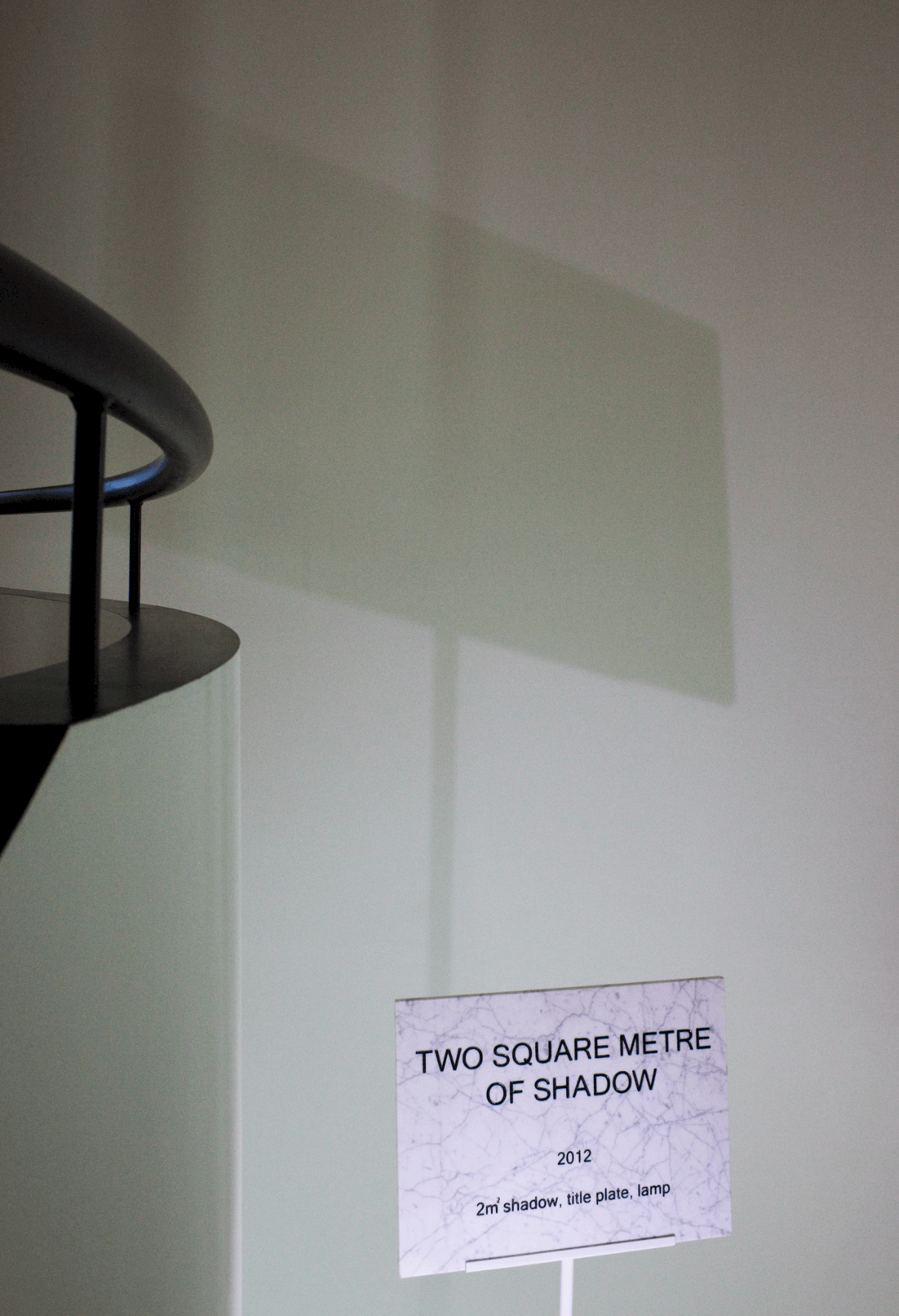

Rumiko Hagiwara (b. 1979)
Two square metre of shadow

Sometimes you come across an artwork that makes you smile almost instantly for its apparent carelessness. The idea and its execution are so simple you feel you could have almost made it up yourself. Is it a practical joke or the work of a genius? This is a common characteristic of conceptual art. It isn’t until you dive into the oeuvre of the artist that you discover that the artwork is well made or at least not as superficial as you might have initially thought it to be. The same is true for this artwork by Japanese artist Rumiko Hagiwara, who went to the Royal Academy of Art in The Hague, AKV St. Joost School of Art and Design in ‘s-Hertogenbosch and the Rijksakademie (State Academy of Fine Arts) in Amsterdam.
The artwork consists only of a light with a white, marble title sign right in front, engraved with the text Ten square metre of shadow. The sign forms an integral part of her work, uniting language and visual. The shadow cast on the wall behind has the exact surface as stated on the label. The explanation of this seemingly simple work can largely be attributed to the artist’s Japanese background. This means that she often has a different, more poetic, view of daily life, and she knows how to use it in her work. Often it consists of a visual joke or she directs the viewer’s attention to a detail you would have missed otherwise. The attention to finesses is typical for Japanese art. The execution of her work, often site-specific or documented on photo or film, combined with the often trivial descriptions, shows her knowledge of and appreciation for conceptual art from the 1960s and 1970s.
In praise of shadows was the title of her exhibition at the Amsterdam gallery Jeanine Hofland Contemporary Art in 2011-2012, showing a large number of similar artworks. The title of the exhibition was derived from a book about the comparison between traditional Japanese aesthetics and that of the Western world. One of the book’s conclusions is that Eastern art has a great appreciation for shadow and its inherent subtlety, making Harigawa’s 10m2 remarkable example of the fusion between East and West.
Reducing the original 10m2 work to the custom 2m2 work for A&O Shearman, due to limited space in the staircase, was no problem. It didn’t change the concept and a new, adjusted sign was soon delivered: Two square metre of shadow.
Art critic Sandra Smallenburg of NRC wrote in 2012, in response to the exhibited work 10m2 at the art fair Art Rotterdam, that it takes courage to offer something as fleeting as a shadow for sale in an environment that is all about colourful paintings and shiny sculptures. Perhaps there is more courage needed to buy such a thing. Luckily enough, Allen & Overy has that courage.
